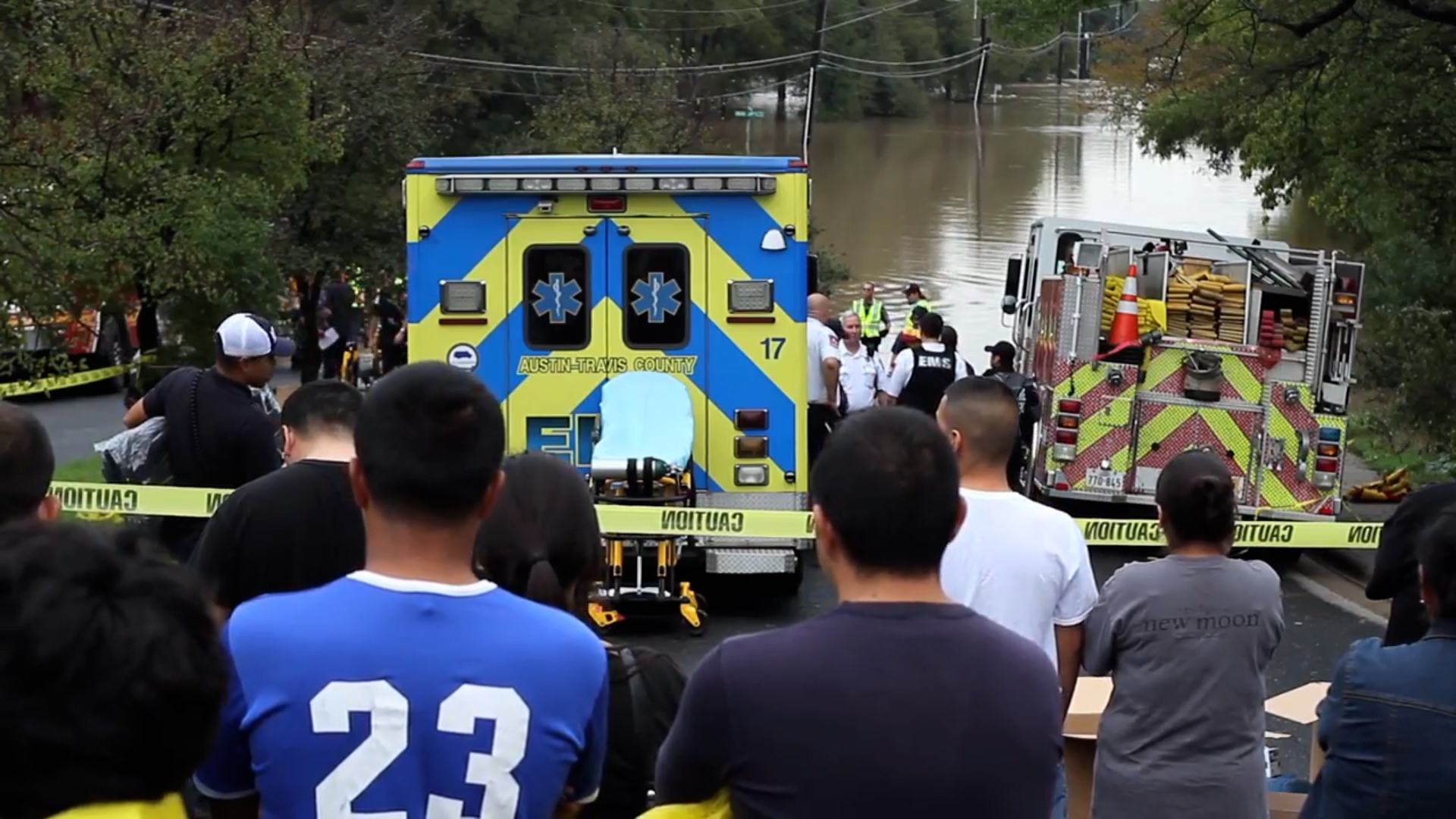
2013 Onion Creek Flood Survivors Recount Their Stories
“I’m walking down, and I see a lady with her baby full of mud,” Constable George Morales said. “And I'm like, ‘Jesus, no one’s helping these people.’”
Upon receiving a call from a family member in a flooded area asking for help, Morales went to the site, seeing people waiting on rooftops and others holding onto air mattresses, boats and whatever else would keep them afloat.
Though Onion Creek has had a history of floods in the area, one of the worst hit on Halloween night in 2013. Within only a few minutes, the neighborhood experienced intense flooding, leaving over 1,000 homes destroyed, at least four lives lost, and families displaced. Decibel spoke to residents from the area as they recounted the events of that night, along with the recovery period that followed.
“It’s happened for so long that you’re used to it,” Morales said. “But when you start to see people die it bothers you. It really does.”
Morales aided people as they evacuated their homes, pointing them to the Dove Springs Recreation Center as a place to shelter in. Now the place has been renamed after him as the George Morales Dove Springs Recreation Center. The slow response from the city that year made him frustrated. As a first responder, Morales said his trauma was different from other residents.
“My trauma was I want you to get as much help as you can, and I can’t help you,” Morales said.
Jo Garcia, former Onion Creek resident since 1994, survived that 2013 night with her son, three grandchildren and daughter-in-law. After her son woke her up deep into the night telling her the house was flooding, Garcia said water rose within minutes and only continued to rush in. They tried to use a truck to climb onto the roof, but floodwaters swept the vehicle into the backyard while Garcia and her three-year-old grandson were standing on it.
“I saw this rope float up,” Garcia said. “I thought, 'I’m not losing my baby. If we go, we go together.’”
Garcia tied herself to her grandson with a rope so she wouldn’t lose him in the flood. Only their heads remained above water, and Garcia said she wanted her grandson out of the coldness in the water. She said she managed to loosen the rope enough to put him on the roof as she prayed out loud to put him at ease.
“I sat him there, and then he said, ‘Grandma, there’s bugs here,’” Garcia said. “That poor baby. When I looked up, I saw stars. It was a beautiful night. So I said, ‘You know what? Let's connect the dots. Look up and let's connect the dots.’”
That same night, Michelle Shadwick woke up at 4:30 in the morning to use the bathroom, only to find the floor wet. She immediately woke up her husband, the water gushing through the fireplace and rising quickly.
Shadwick said she knew they had to evacuate, so the pair escaped through the kitchen window. Once outside, Shadwick realized she had to return for her husband’s diabetes medication.
“I'll never forget this because it led to the kitchen,” Shadwick said. “The refrigerator was on its back floating. Everything was just floating. And it was very surreal.”
At around 6 a.m., awake to care for her newborn baby, Laura Flores heard knocks coming from her door. She said she was surprised to find two men there, urging her to get onto the roof because the neighborhood was flooding. Having grown up in Austin, Flores said she dismissed the warning because water had never gotten into her home before. Soon, though, water came in fast, and Flores, her daughter and mom got on the roof with the help of the two strangers.
“As soon as the water went down, we looked and saw the damage that had been done,” Flores said. “Everything I got from the baby shower was gone, money that had been saved to put in her bank account. A lot of stuff was damaged.”
Though Flores had insurance, she said it didn’t cover contents in the house, only the structure itself. After the flood, the city began buying out houses in the neighborhood to mitigate risk. Flores left the city she grew up in for Kyle, Texas.
“It was hard to leave something you grew up with all your friends,” Flores said. “It was hard leaving all those memories behind. It was probably best because I couldn't imagine losing anybody. I don't want to lose my family.”
Along with the buy-out program, the city is studying Austin’s floodplains through 2025 so they can update any outdated maps. Though these residents and family members survived the floods, many community members continue to raise awareness to prevent the same or worse from happening again.
“What can we do to prevent stuff like that?” Morales said. “Because it gets tough. It’s tough.”
To hear more, visit our YouTube page with the survivors’ full interviews.
Community journalism doesn’t happen without community support.
Got story ideas, advice on how we can improve our reporting or just want to know more about what we do? Reach out to us at news@klru.org.
And if you value this type of reporting, then please consider making a donation to Austin PBS. Your gift makes the quality journalism done by the Decibel team possible. Thank you for your contribution.
More in Health:
See all Health posts





Contact Us
Email us at news@klru.org